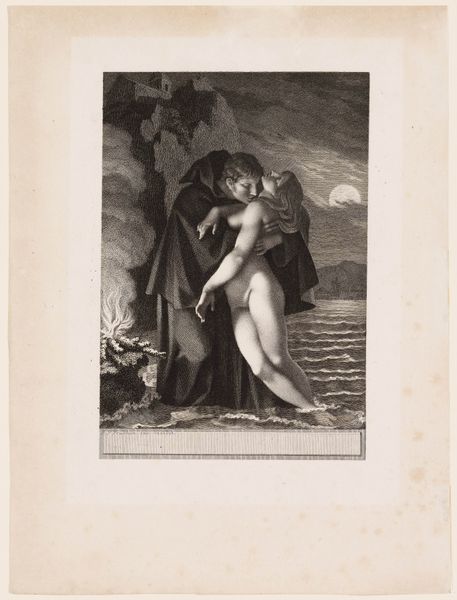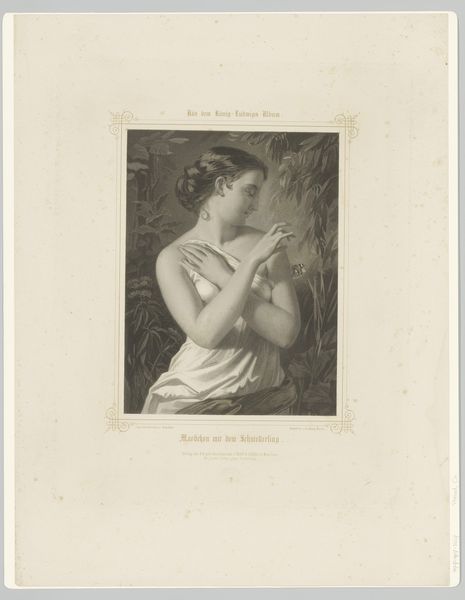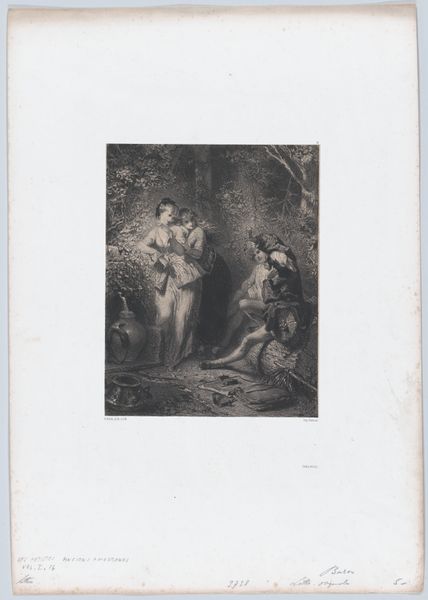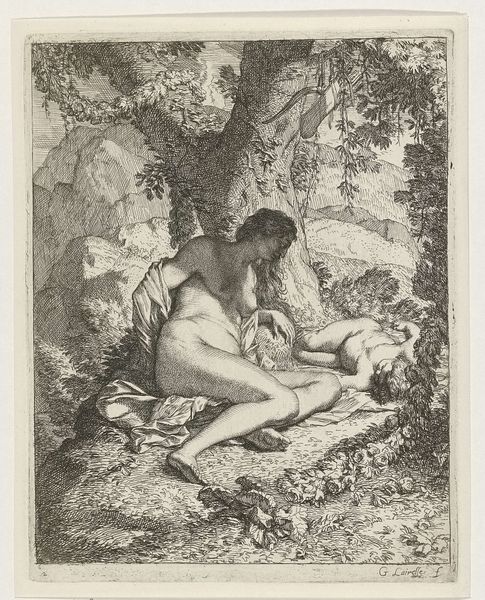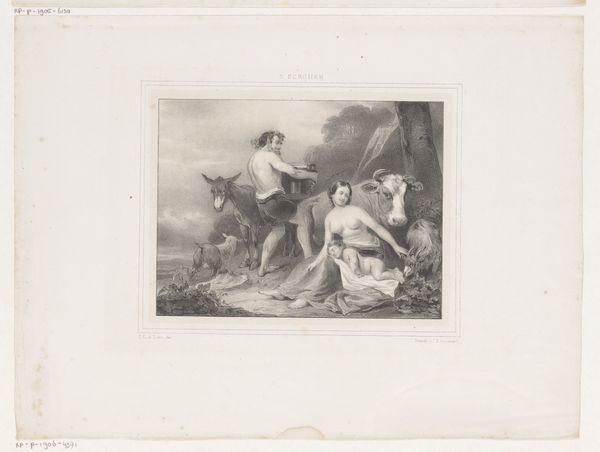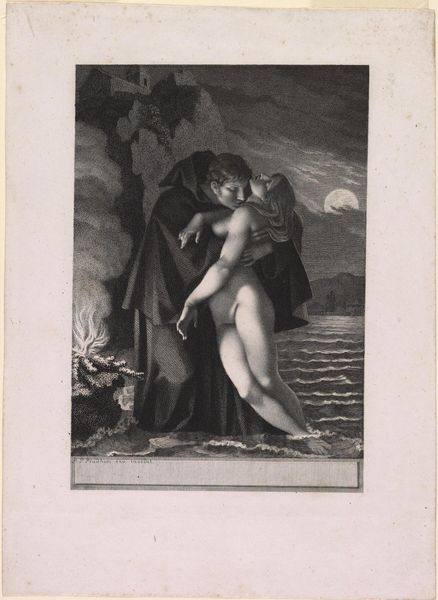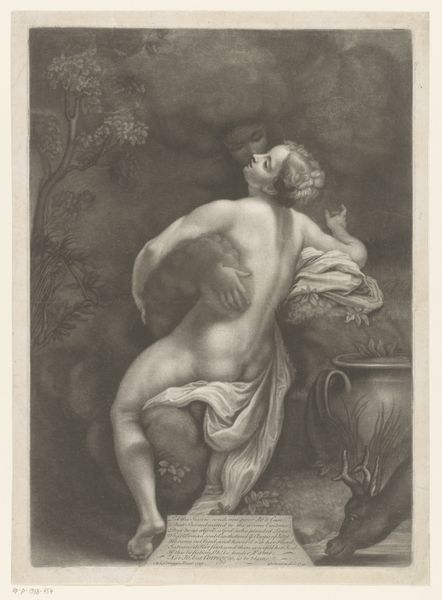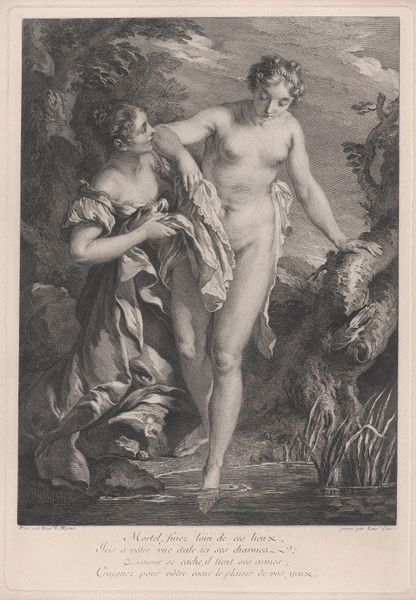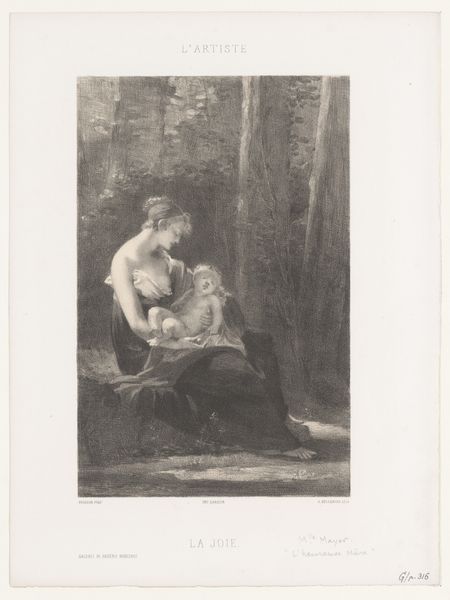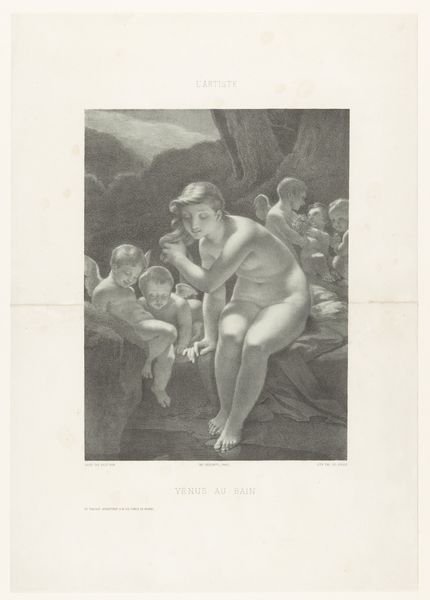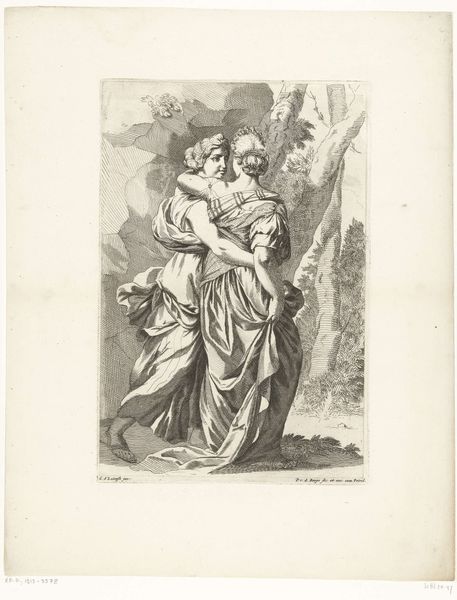
Dimensions: height 959 mm, width 685 mm
Copyright: Rijks Museum: Open Domain
Editor: Here we have Émile Lassalle’s engraving, “Woedende Medea,” from 1859. The raw emotion depicted is powerful. The intensity of Medea’s gaze and her protective grip on the children – it's chilling. What do you see in this piece, particularly considering the symbolism? Curator: The image certainly encapsulates a moment thick with anticipation, charged with layered cultural memory. Note the dagger in Medea’s hand and the way she looks warily towards something, or someone, unseen beyond the frame, suggesting danger. Even the untamed wilderness presses in on her, reinforcing a sense of her isolation and desperation. Is Medea protecting her children, or something else? Editor: Protecting them, certainly, but from what, I wonder? Her husband’s betrayal? Fate itself? Or even…herself? Curator: Precisely! Her posture certainly presents themes beyond mere physical defense, hinting at a far deeper, internalized struggle. Consider the image of the unkempt woman and landscape alongside classical romantic ideals. What tension does that combination create for the viewer? Editor: That tension is gripping! It challenges how we understand both her actions and her identity. So it's a convergence of societal expectation versus brutal reality then? Curator: Exactly. She's both victim and vengeful mother – the raw power of emotion disrupts the expectation. Lassalle is very strategic by presenting this divergence between classical tropes and human action, offering viewers a lens through which we re-examine what happens when myth meets humanity. Editor: I now view Medea’s story as not just a tale of revenge, but a powerful representation of internalized conflict when faced with difficult choices. It adds incredible weight to her image. Curator: Yes. It's those symbols – the knife, the wild backdrop, Medea's look – and that inner tension that makes this artwork memorable. The continuity and universality of her inner struggle echo through time.
Comments
No comments
Be the first to comment and join the conversation on the ultimate creative platform.
